Story by Pete Vack
Before the 1955 Mille Miglia, Enzo Ferrari was worried about the entry of the Mercedes-Benz 300SLRs so he opted to install a 4.4 liter engine in place of the regular 3.7 liter six into a lengthened Monza chassis.
Which was fine, except that he didn’t tell anyone, even the drivers.
Since 1928, the Mille Miglia was Enzo Ferrari’s playground and he dominated the post war events with his new sports racers. Still, in 1954 his cars had lost to Ascari and the formidable Lancia D24, breaking a five year winning streak. Mercedes’ entry into the 1955 event with their thinly disguised Grand Prix cars could not have made Ferrari happy.
We shall discount the shortened 1940 Mille Miglia won by BMW. Mercedes-Benz was only non-Italian make to win a full length Mille Miglia, in 1931. The factory entered several cars but only the SSK 7 liter blown car of Rudolf Caracciola actually started. The team did not demonstrate the shock and awe tactics back then. Caracciola simply won the race defeating the new factory 2.3 8C Alfas, many of which had tire problems.
Then, in 1952, a daring drive by Giovanni Bracco in a 4.1 Ferrari saved Ferrari’s honor as Bracco defeated the best M-B could offer, including a 300SL coupe driven by Rudolph Caracciola. But it was close. The team of Karl Kling and Hans Klenk led many stages but finished more than 4 minutes behind Bracco. Lang went off the road and Caracciola, twenty-one years after his big win, had plug trouble. Piero Taruffi entered his first Mille Miglia in 1932 with Scuderia Ferrari and in 1952 again drove for Ferrari but had transmission problems and retired after Rome. As Motor Sport reported at the time, “…the writing was on the wall…” and it did not read Viva Ferrari.
The Mercedes-Benz 300SLR
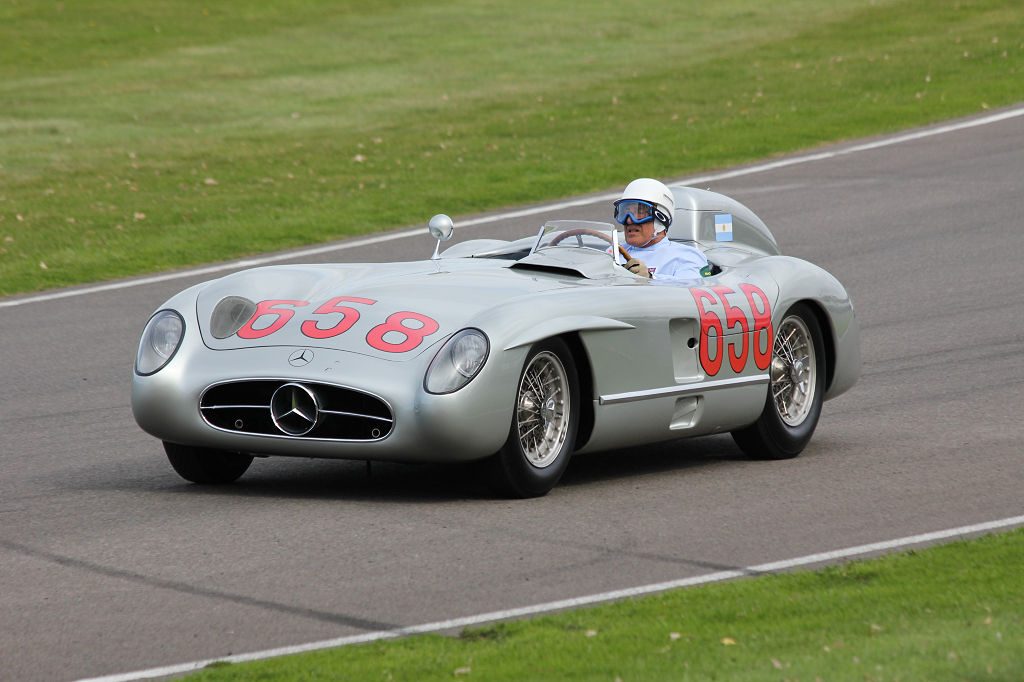
Sir Stirling Moss drives the Fangio 300SLR at Goodwood in a tribute to Fangio in 2011. Missing is the curved plexiglass windscreen. Hugues Vanhoolandt photo.
In 1955, Mercedes came in style, with two trucks each carrying two 300SLRs in their maiden appearance. The 1955 Teutonic invasion was unworldly, with a preparation and thoroughness which astounded the rest of the participants. “A column of trucks wound its way over the Brenner Pass almost a month before the race,” recalled Giannino Marzotto. Each of the four drivers had driven the entire course at least 10 times before the actual event, using road equipped 300SL Gullwings. Giovanni Lurani remembers that there were a dozen cars for just technicians, and 60 personnel who were deployed at Rome, Bologna, Pescara, Ravenna and Florence. “It was a mobilization in the grand style for the sole purpose of winning.”
The 300 SLR was a state-of-the art racecar. A welded aluminum tube spaceframe chassis carried ultra-light Elektron magnesium-alloy bodywork helping keep the car to a dry weight of 1,940 lb. The straight-8 was 2,981.70 cc (78.0 x 78.0 mm), putting out about 310 horsepower at 7,400 rpm. Like the W196, the engine was canted to the right at 33-degrees and to reduce crank flexing, power takeoff was from the center of the engine. Also notable were the desmodromic valves and mechanical direct fuel injection.
Drum brakes were used, mounted inboard with short half shafts and two universal joints per wheel. Suspension was four-wheel independent with torsion bars and double wishbone in front. The rear used a low-roll center system featuring off-centered beams spanning from each hub to the opposite side of the chassis. Continental supplied the racing tires.
It made the Ferraris look positively archaic, but that didn’t mean that the cars were invincible.
Ferrari 118 and 12 anolomies
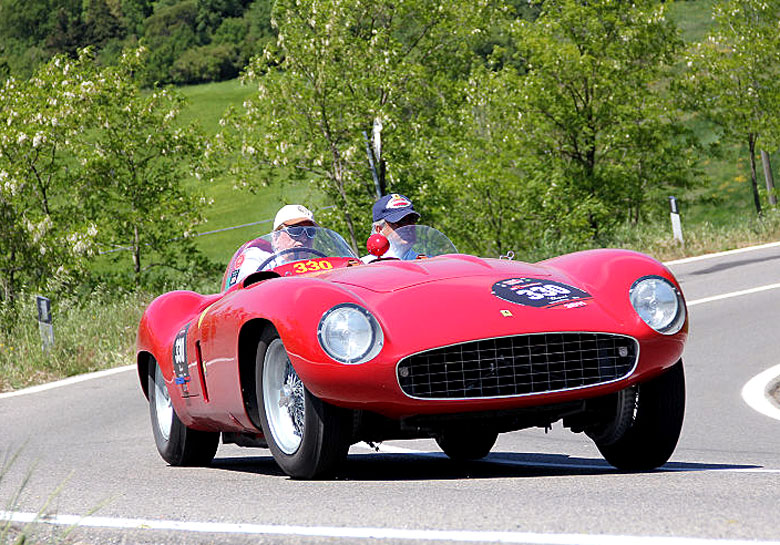
The ex-Castellotti Ferrari 121 LM, S/N 0558 LM, seen here at the Mille Miglia in 2011. Castellotti thought he was the only one with the 4.4. liter engine. He wasn’t. Photo by Hugues Vanhoolandt.
In the annals of Ferrari engine/type nomenclature, the 1955 big sixes as used in the Mille Miglia are an anomaly. The engine types go like this:
500 Mondial 496 cc of one cylinder x 4 = 1984 cc
750 Mondial 749 cc of one cylinder x 4 = 2996 cc
306 S 496 cc of one cylinder x 6 = 2876 cc
376 S 624 cc of one cylinder x 6 = 3744 cc
446 S 735 cc of one cylinder x 6 = 4412 cc
250 GT 246 cc of one cylinder x 12 = 2952 cc
As can be seen, things go along in an orderly fashion before and after the sixes. Along comes the six and suddenly we see 306 S, 376 S and 446 S, the latter two installed in cars strangely enough designated the 118 and 121 LM, for which no one apparently has an explanation.
We asked Ferrari expert Alan Boe about this. “As far as I know, these engine number designations had nothing to do with the engine itself, but were merely assigned by Ferrari in the normal course of building new engines. The 118 LM engine, a 3.7 liter six cylinder, was also known by Ferrari as as a tipo 376 S (3.7 liters, six cylinders) displacing 3747 cc. The same logic goes with Ferrari’s 306 S engine (3 liters, six cylinders). The 118 LM engine was developed from the 625 GP in-line four cylinder engine by adding two cylinders, the 121 LM engine displaced 4.4 liters and was referred by Ferrari as a tipo 446 S (4.4 liters, 6 cylinders) and was realized by Lampredi by adding two cylinders to Ferrari’s 2.9 liter 735 engine. Again, as far as I know, the 121 LM numerical designation was merely assigned to the engine by Ferrari in the normal course of developing new powerplants, and has nothing to do with the engine’s size.”
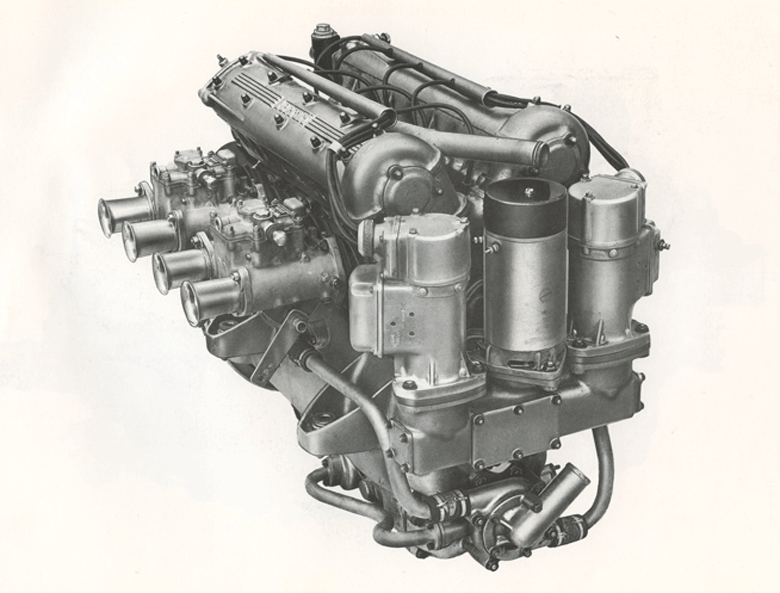
Ferrari published a stunning catalog of its engines. Missing in photos were the 376 and 446 engines. They did provide this image of the 625 four, from which the 118 engine was derived.
Other such variances in the era are rare, but included the 553 F1, 555 F1, the D50 and its successor the Type 801, for 8 cylinders and F1 and the 156 F2, (for 1500 cc and 6 cylinders.) The 306 engine never saw competition but the Lampredi designed 376 and 446 were Ferrari’s choice of engine to compete against the 3 liter straight eight 300SLRs. According to Giannino Marzotto, Ferrari was in crisis mode, much of it caused by Aurelio Lampredi, “…whose innovative reserves seemed to have dried up…” Adding two cylinders to existing fours does smack of a lack of innovation and one senses that Ferrari wasn’t exactly hot on the big sixes.
Of course Enzo Ferrari could call his cars whatever he wanted to call them, and that fall right into our hands, doesn’t it. While we don’t know the logic behind the 118 or 121 nomenclatures, clearly the 118s were to have fitted the smaller 3744 cc unit. Unless of course Ferrari wished to install the full force 4412 cc engine into the two other 118s entered for the 1955 Mille Miglia, and continue to refer to them as 118s. The Ferrari sixes were strange birds, ran only one season as Scuderia cars then all pawned off to various and sundry sorts in the U.S. but not until the end of the 1955 sports car season.
And lest we forget, a 4.4 six was installed in the Experimental Bardhal Ferrari for a run at Indy in 1956, that was even less successful than the 1955 121LM.
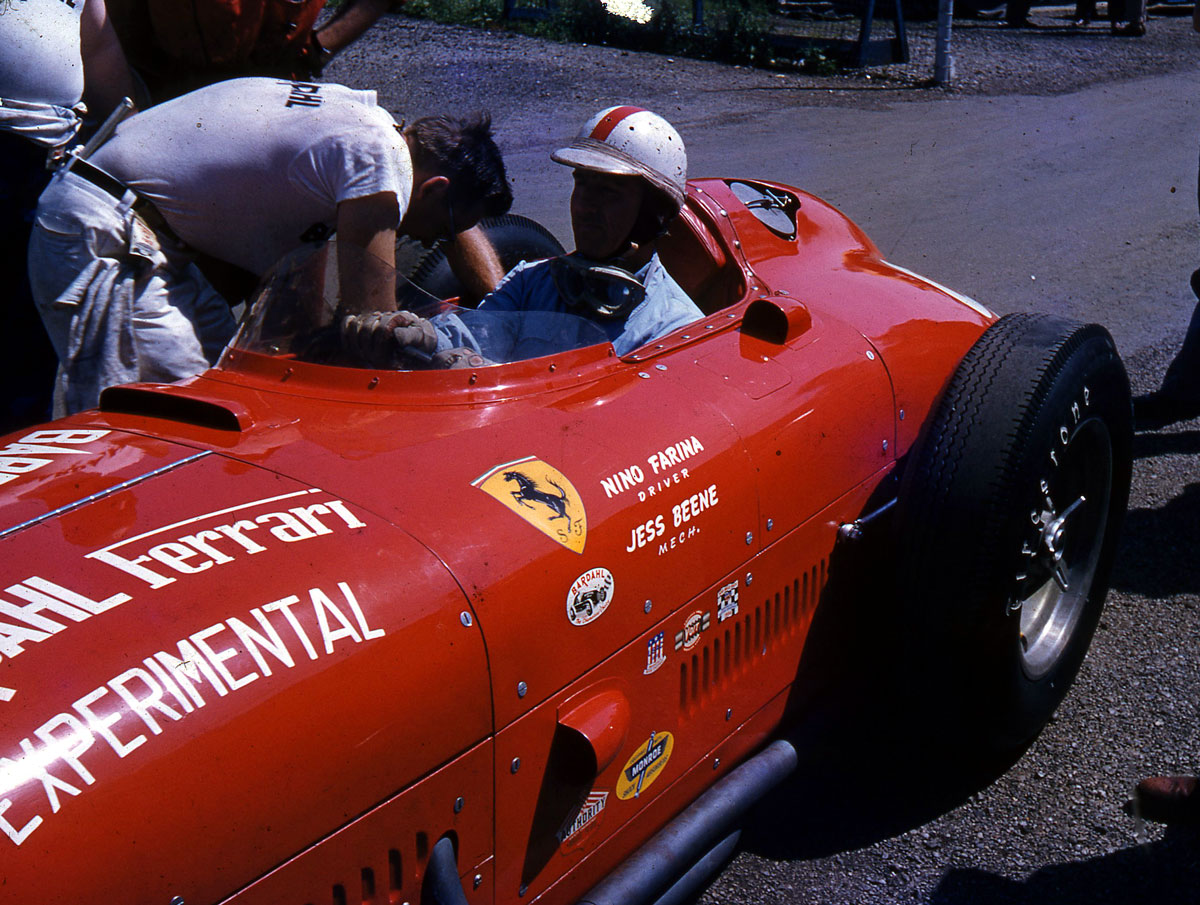
The Bardahl Kurtis Ferrari Maserati OSCA failed to qualify, as it could not muster up enough horsepower and was even slower than the old V12. “Too much spaghetti, not enough sauce,” it was said, and so ended the 1956 European Indy attempt. Photo courtesy Dale LaFollette.
But having odd designations was no reason not to call a spade a spade. Enzo entered a four car team with an official 121LM for Castellotti (0558), and three 118s, one for Taruffi (0484), Paolo Marzotto (0546) and the other for Maglioli (0532). For years afterward, Taruffi still believed that his car was equipped with the 3.7 liter engine as the 118 lingo seemed to indicate. So did Maglioli, at least until after the race when a mechanic told him otherwise.
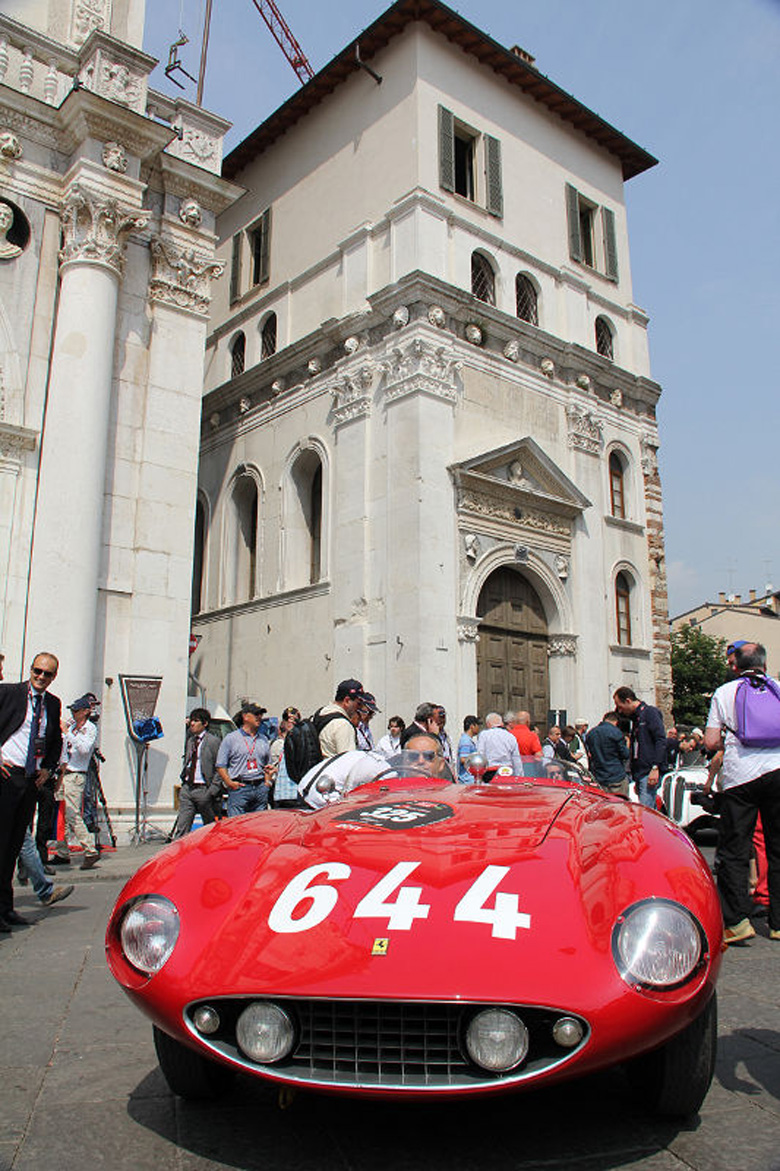
Ferrari fans, this is not a 118 or a 121, but a Ferrari 500 Mondial s/n 0528 MD in Piazza della Loggia at the Mille Miglia in 2011. The photo by Hugues Vanhoolandt captures the essence of Ferrari’s 1955 Mille Miglia.
So much for the main players. What would transpire in the race was often lost to history. The stunning victory by Stirling Moss dominated – and continues to dominate – any writing of the 1955 Mille Miglia as perhaps it should. However, the back stories are just as interesting, like the real reason Ferrari decided not to tell anyone about the engine swap and why tire problems plagued Ferrari but not Mercedes, and why Fangio did not beat Moss on this occasion. We’ll get to that in the next installment.
Sources
Stirling Moss Book of Motorsport, 1955 Cassell and Co London
Works Driver, Taruffi, Temple Press 1964
Fangio, My Racing Life, Carozzo, Fangio, Patrick Stevens Ltd 1986
Red Arrows, Marzotto, Nada, 2001
Mille Miglia 1927-1957, Lurani, Automobile Year, 1981
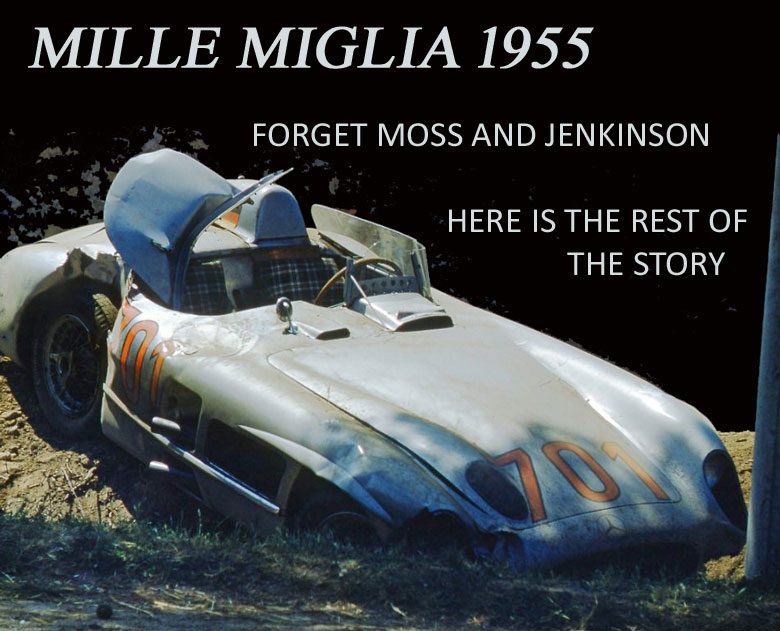
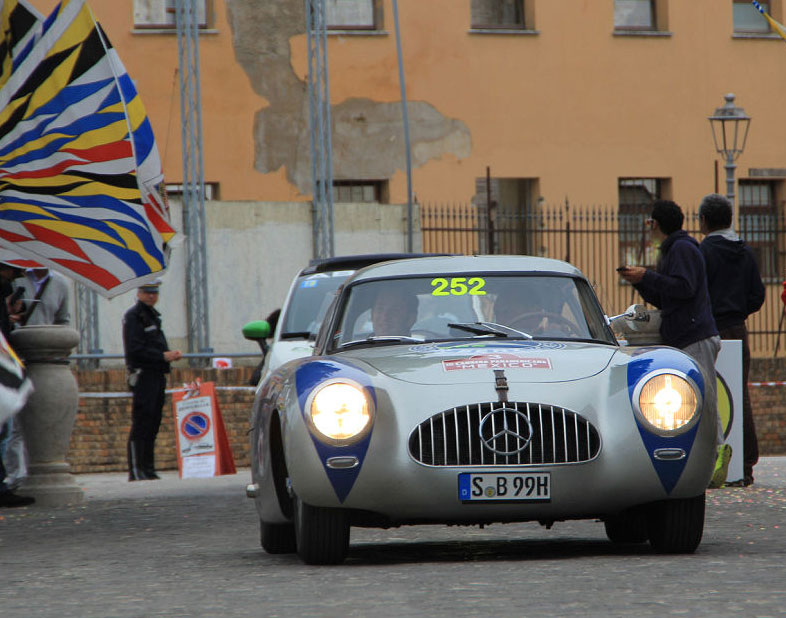

Surely the 250GT is 246cc x 12 and not 4 ?
To be sure. Corrected, and thanks!
Pete
Since your story seems to focus on Ferrari efforts to challenge
the Mighty Mercedes with the 6 cylinder cars called 118 and 121 LM
it might be of interest o mention they ran a 3,7 version early
as January 1955 down in Argentina in Formula Libre event.
Mercedes skipped the first round there and then Sebring also, which to
my mind makes their debut in Mille more impressive with Moss winning,
as I reminded him at lunch that was start with wins by him in Ireland
and round it off nicely with Targa victory in Sicily,,some Year !
Jim sitz
Good catch, Jarl
But it wasn’t a 250GT…it was called a 250 Sport, and Ernie Mendicki and his partner (Johnnie something but I’ve forgotten his last name) owned it for many years, even correcting a wrong nose it had acquired at some point (the incorrect one hung on the wall of Ernie’s shop for decades. I know where it is now, but I’m not telling).
I believe it was actually the first 3 liter V12 Ferrari made.
Ernie actually drove the car in one of the Monterey Historics. Since Ferrari was always the featured marque in a year which was a ten year (decade) number from the first such event in 1974, it had to be either 84 or 94. He said that it was terrible on a short, tight track, as it had a four barrel carb which flooded the car on every on of Laguna’s 12 turns (yes there are 12…remember one complex has a duplicate number, with an added letter-8 and 8A).